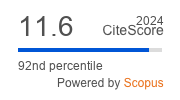SPORTS VIDEO CATEGORIZATION BY MULTICLASS SVM USING HIGHER ORDER SPECTRA FEATURES
DOI:
https://doi.org/10.29284/ijasis.3.2.2017.27-33Keywords:
Sports video categorization, Video frames, higher order spectra features, Multiclass SVMAbstract
Video classification is one of the rising fields in the video analysis. A large number of videos are accessed by people’s daily from television and internet. It is easy for humans to index the video from the collection of videos which contains news, cartoon, sports, comedy and drama. Among the categories, sports video plays a vital role due to their commercial demand. There is a similarity between the different sports video which makes the classification task difficult. In this study, the sports video categorization for five categories of sports like football, cricket, volleyball, tennis and basketball is presented. The sports video categorization system uses Higher Order Spectra Features (HOSF) for the feature extraction from video frames and multiclass Support Vector Machine (SVM) classifier for the classification of videos. The system gives average classification accuracy of 93.44% using HOSF and multiclass SVM classifier.
References
S.M. Safdarnejad, X. Liu, and L. Udpa, Genre categorization of amateur sports videos in the wild, IEEE International Conference on Image Processing, 2014, pp. 1001-1005.
S. Susan, S. Chaurawat, V. Nishad, M. Sharma, and S. Sahay, Speed and trajectory based sports event categorization from videos, IEEE International Conference on Signal Processing and Communication, 2016, pp. 496-501.
J. Hanna, F. Patlar, A. Akbulut, E. Mendi, and C. Bayrak, HMM based classification of sports videos using color feature, IEEE International Conference Intelligent Systems, 2012, pp. 388-390.
Y. Dong, J. Zhang, X. Chang, and J. Zhao, Automatic sports video genre categorization for broadcast videos, IEEE Conference on Visual Communications and Image Processing, 2012, pp. 1-5.
S. Takagi, S. Hattori, K. Yokoyama, A. Kodate and H. Tominaga, Sports video categorizing method using camera motion parameters, International Conference on Multimedia and Expo, Vol. 2, 2003, pp. II-461.
S. Takagi, S. Hattori, K. Yokoyama, A. Kodate, and H. Tominaga, Statistical analyzing method of camera motion parameters for categorizing sports video, 2003, pp. 222-225.
K.M. Kitani, T. Okabe, Y. Sato, and A. Sugimoto, Fast unsupervised ego-action learning for first-person sports videos, In CVPR IEEE, 2011, pp. 3241-3248.
Y. Yuan, and C. Wan, The application of edge feature in automatic sports genre classification, IEEE Conference on Cybernetics and Intelligent Systems, Vol. 2, 2004, pp. 1133-1136.
J. Zhang, Y. Dong, K. Tao, and X. Chang, A modified sports genre categorization framework based on close-up view pre-detection, IEEE International Conference on Broadband Network and Multimedia Technology, 2011, pp. 301-305.
S.A. Hosseini, M.A. Khalilzadeh, M.B. Naghibi-Sistani, and V. Niazmand, Higher order spectra analysis of EEG signals in emotional stress states, IEEE International Conference on Information Technology and Computer Science, 2010, pp. 60-63.
J. Liu, and P. Wu, Higher order spectra denoising method of phase matching noise estimation, International Conference on Pervasive Computing, Signal Processing and Applications, 2010, pp. 811-814.
C. Srinivasan, S. Dubey, and T.R. Ganeshbabu, Complex Texture Features For Glaucoma Diagnosis Using Support Vector Machine, International Journal of MC Square Scientific Research, Vol. 7, No. 1, 2015, pp. 84-90.
T.S. Kumar, K. Rashmi, S. Ramadoss, L.K. Sandhya, and T.J. Sangeetha, Brain tumor detection using SVM classifier, IEEE International Conference on Sensing, Signal Processing and Security, 2017, pp. 318-323.
D. Yang, J. Kong, N. Du, X. Li, and X. Che, A novel approach for license plate localization based on SVM classifier, IEEE International Conference on Information Management and Engineering, 2010, pp. 655-660.
D.R. Caon, A. Amehraye, J. Razik, G. Chollet, R.V. Andreäo, and C. Mokbel, Experiments on acoustic model supervised adaptation and evaluation by k-fold cross validation technique, International Symposium On I/V Communications and Mobile Network, 2010, pp. 1-4.
Downloads
Published
Issue
Section
License
This work is licensed under a Creative Commons Attribution 4.0 International License, which permits unrestricted use, distribution, and reproduction in any medium, provided the original work is properly cited.











